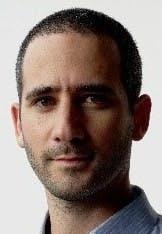The necessary prerequisite (and limitation) to supervised machine learning is the digital twin. Deploying a digital twin is not an easy feat. However, a second alternative to the supervised machine-learning/digital-twin paradigm is the unsupervised machine-learning approach.
With unsupervised machine learning, the algorithm is sensor/vendor/asset/age/machine agnostic. It is automatically trained to identify anomalies in data without the need to learn the underlying process it monitors. Here at Presenso, unsupervised machine-learning algorithms detect anomalies autonomously (or patterns of anomalous behavior) and we're able to predict asset failure hours or days before its occurrence.
As facilities look for ways to improve yield rates, both the digital twin and machine learning will continue to generate interest. It is our position that the most effective way to use big data for predictive asset maintenance is to decouple the digital twin and machine-learning solutions.
Perhaps over time the digital twin will become more accessible and affordable. However, at this time, unsupervised machine learning is more cost-effective and scalable for most industrial plants.
Eitan Vesely is CEO of Presenso.





